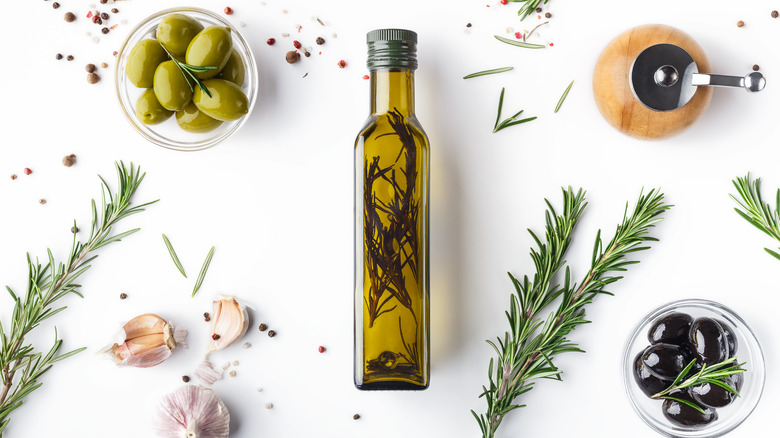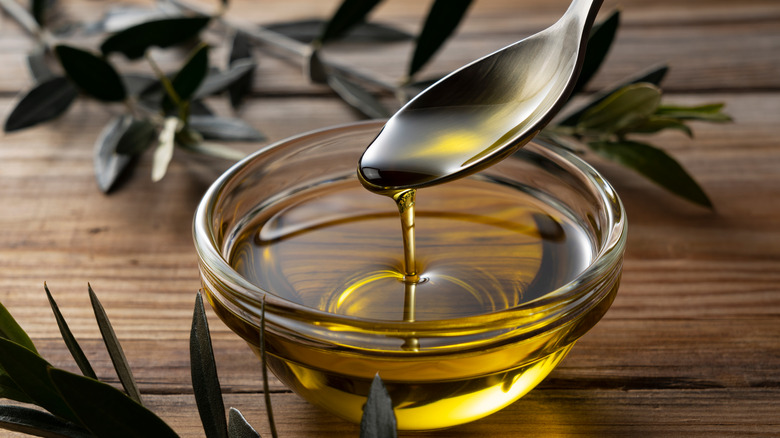What Does The Harvest Date Say About A Bottle Of Olive Oil?
Trying to distinguish the best quality olive oil at the best price amid a supermarket shelf full of options may seem like a daunting task. But in reality, it's not that difficult. Sure, there are a few tips to keep in mind. As Real Simple notes, olive oil is best when it's fresh, so it's generally a good idea to avoid clear bottles, in which olive oil can become oxidized due to exposure to sunlight, with damaging consequences for flavor and aroma. Shopping in stores where bottles are unlikely to be sitting on the shelf over long periods of time is also a good idea, according to MasterClass.
But the only tricky part is learning to accurately parse the information given on olive oil labels, some of which is extremely valuable and some of which is absolutely useless. The phrase "first cold press," for example, is often useless as an indicator of quality since by law, this is required for all extra virgin olive oils, observes Food & Wine. Extra virgin olive oil (or EVOO), by contrast, is an incredibly helpful term, as it signifies that the olive oil is not only top quality but also chemical-free, confirms MasterClass.
The harvest date is another labeling indicator that can be extremely valuable in terms of assessing quality, points out About Olive Oil. However, it's not the only date commonly found on bottles of olive oil.
The difference between harvest dates and best by dates
Most quality olive oils will include two helpful dates on their labeling: the best-by date and the harvest date. According to About Olive Oil, the former is an indicator of how long the olive oil is safe to consume — assuming proper storage, of course — and may extend up to two years from the date olives were harvested. The harvest date, meanwhile, is largely self-explanatory. It confirms when the olives were harvested from olive trees.
Since freshness is an extremely important factor for olive oils, the presence of a harvest date on labels allows shoppers to compare bottles of similar quality (EVOO, of course) to find the freshest possible option. However, it's not necessarily a red flag if a bottle's label lacks a harvest date, observes About Olive Oil. There are several plausible reasons — including a blending of olive oils from different sites or with varying harvest dates — for omitting this information.
But the best producers take pride in the quality of their olive oil, notes Food & Wine, and will typically display the harvest date prominently on their labeling. The harvest date, if present, is thus a very reliable indicator of freshness, although, as MasterClass points out, this freshness will soon be diminished if the bottle's contents are not consumed in a timely fashion. For this reason, Thomas Keller, famed chef at The French Laundry, recommends buying olive oil in smaller bottle sizes.

